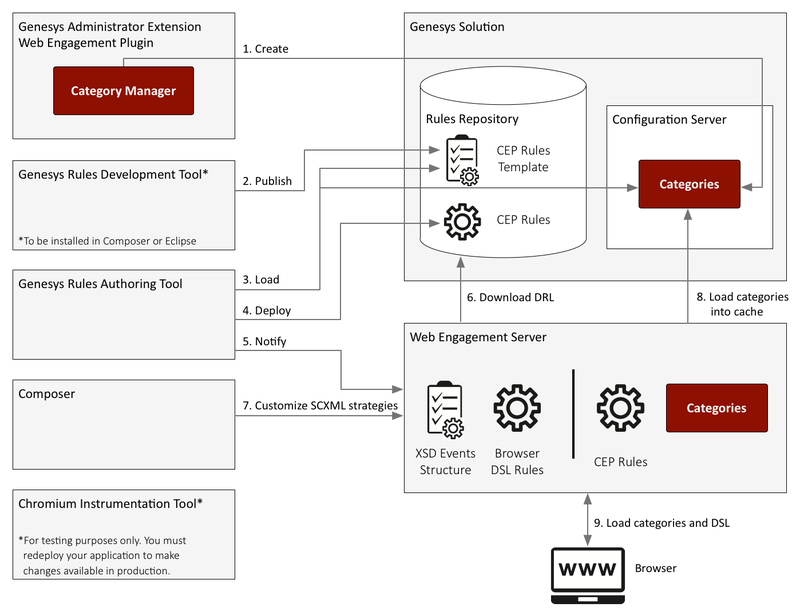Customizing an Application
When you develop a Web Engagement application, you start by creating your application with the script tools which generates default SCXML strategies, rule templates, and DSL code. You can customize all of this material through specific tools.
The diagram below shows where you can customize the Web Engagement data used by your application.

- If you are following the Simple Engagement Model, you create categorization information with the Categories interface in Genesys Administrator Extension. This information is added to Configuration Server and retrieved by the Web Engagement Server. When the Web Engagement Server receives a browser request, it checks the category information. If you are following the Advanced Engagement Model, you create business events by modifying the DSL using the InTools application.
- You must publish the CEP rule template associated with your engagement model. You can modify this template before you publish it.
- The Genesys Rules Authoring Tool (GRAT) loads the CEP Rule template and allows you to create a package of CEP rules based on your categories (Simple Engagement Model) or on your business events (Advanced Engagement Model).
- If your application is built and deployed, and the Web Engagement servers are started, you can deploy rules with GRAT.
- GRAT notifies the Web Engagement Server that rules are available in the Rules repository.
- The Web Engagement Server downloads the rules. You can use the InTools application to customize your DSL.
- You can customize the SCXML strategies available in the _composer-projects directory located in Web Engagement installation directory/apps/application_name/resources. See Customizing the SCXML Strategies for details. At this point you can also customize the various Browser Tier Widgets.
- When a browser submits a request to the Web Engagement Server, the Web Engagement Server loads the categories into the cache.
- The user's web browser loads the updates.
This page was last edited on January 20, 2016, at 01:50.
Comments or questions about this documentation? Contact us for support!
